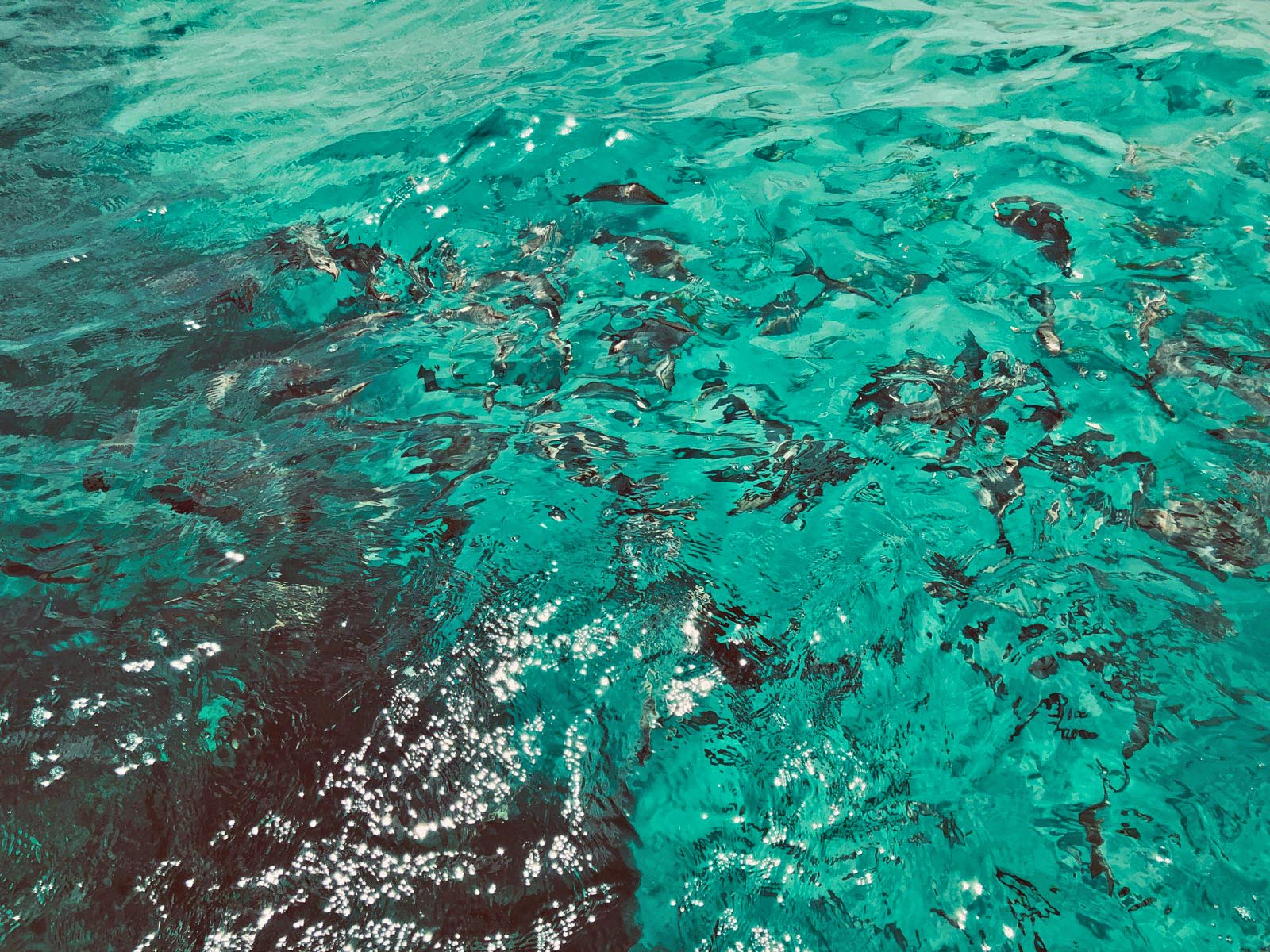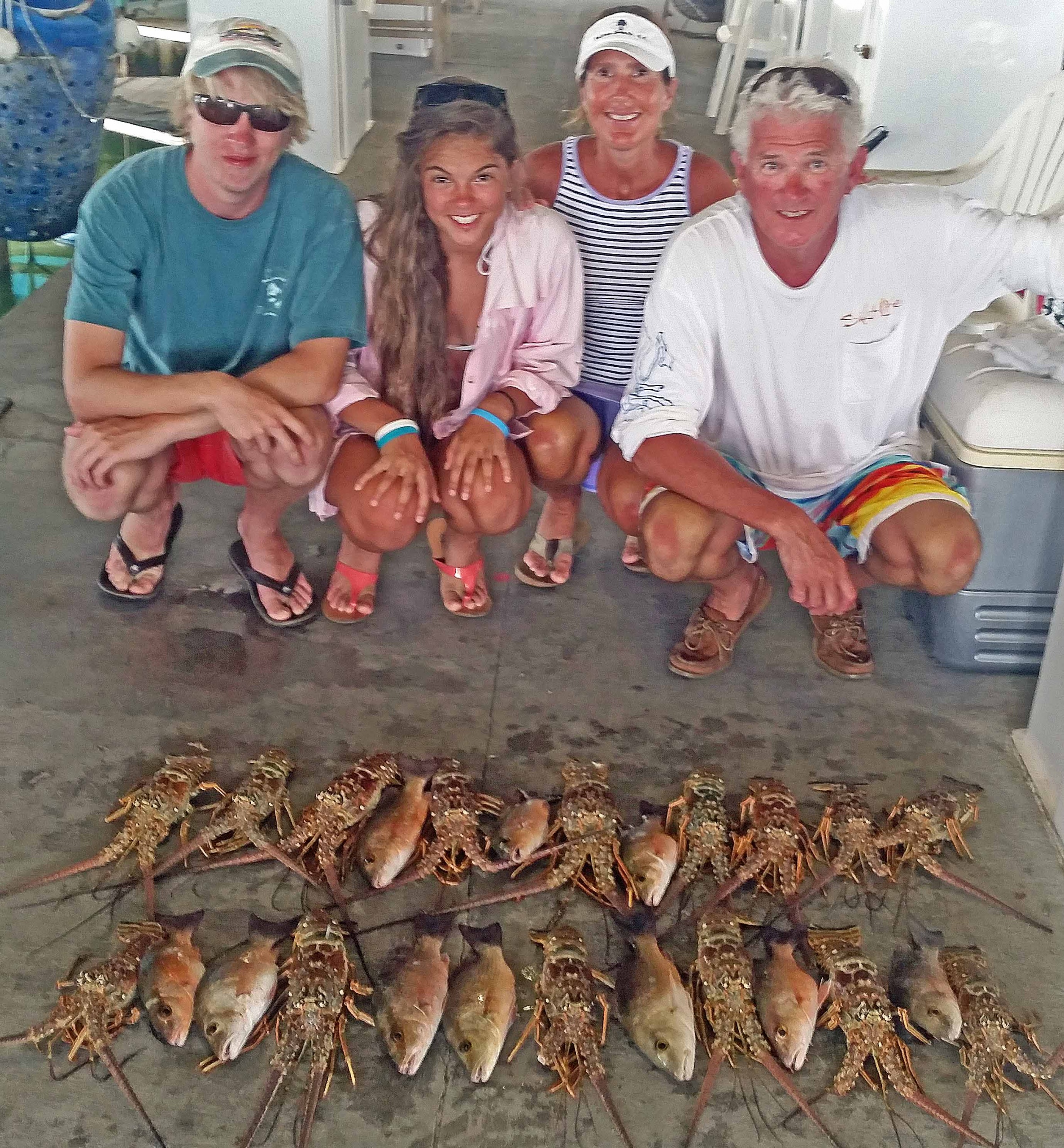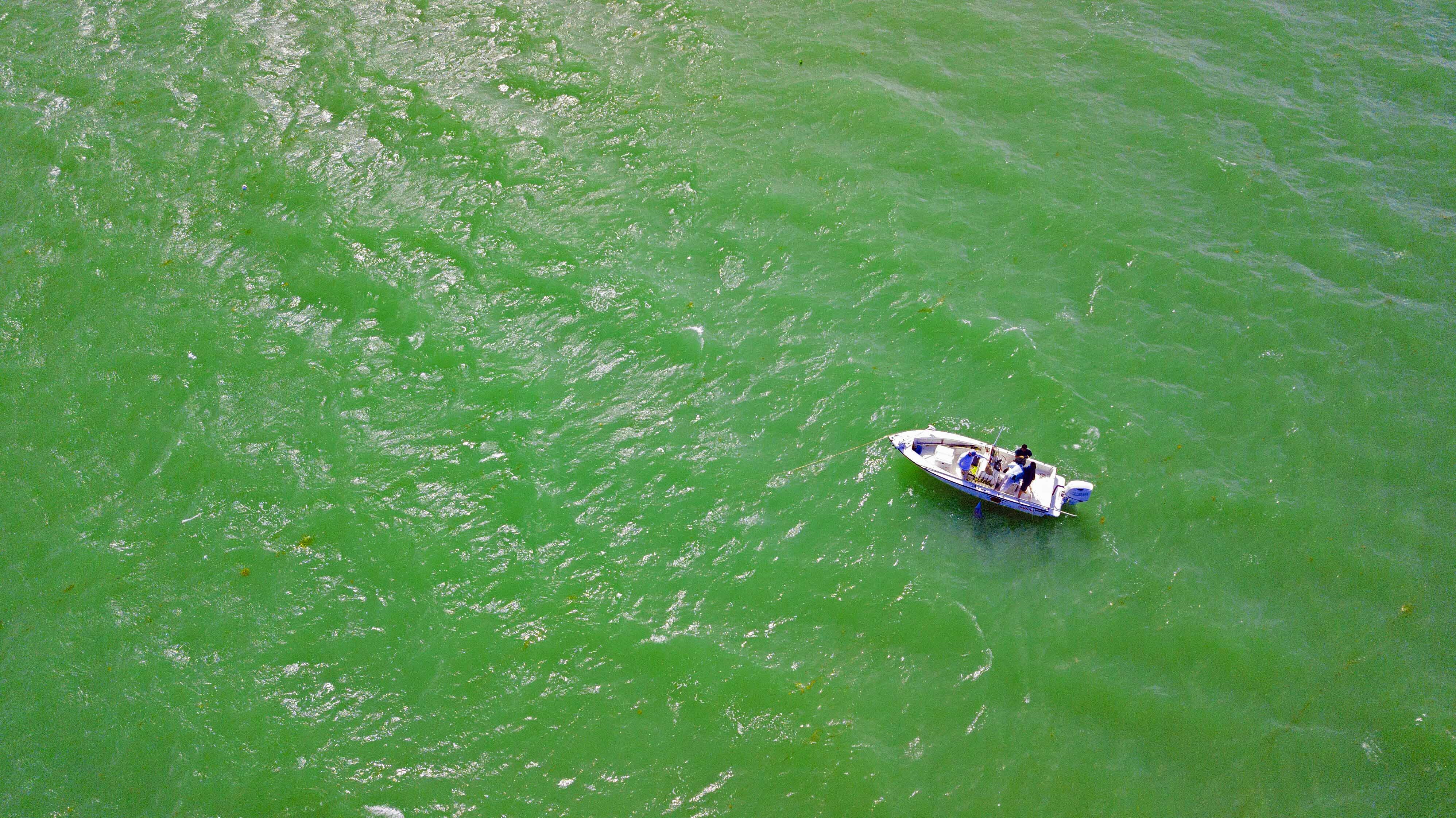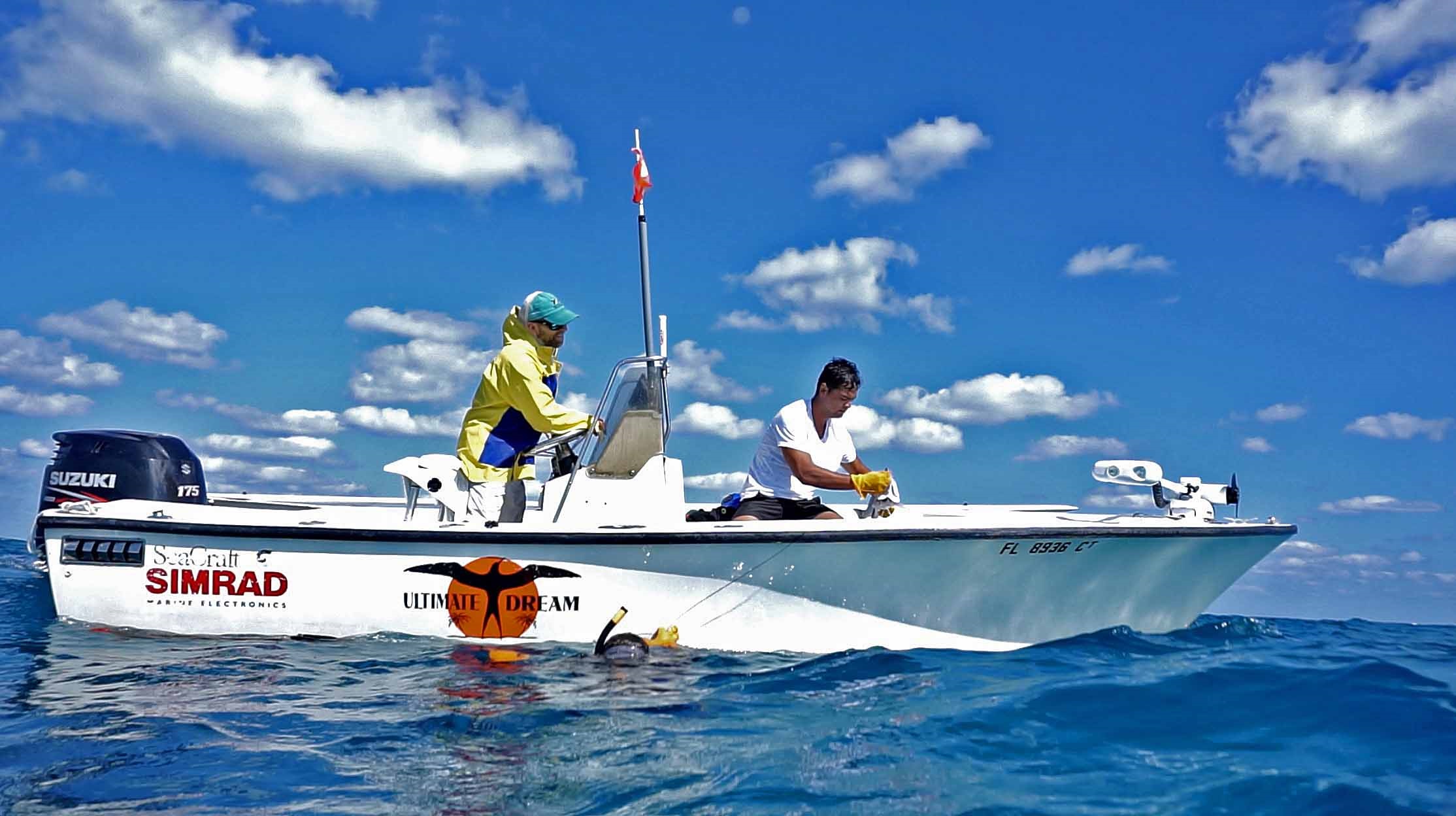Islamorada Snorkeling Tour
What can you expect from an Islamarada Snorkelling Tour?
“Islamorada Snorkeling Tours” are a specialty that we do aboard the 20-ft Seacraft Ultimate Dream. This snorkeling tour is not to be confused with the large-group tours run by many dive shop operators, charging approximately $30 to $50 per person for 2 ½ hour to 4 ½ hour trips (very economical, and a great way to get a chance to see the undersea wonders along the Florida Reef Tract).
Rather, our tours are custom, and range throughout the Key Largo Marine Sanctuary, south through Pickles, Conch, Little Conch, Davis, Crocker, Alligator, to Tennessee Reef and the patch reefs off of Long Key.
We specialize in fish watching with complete and competent identification of everything you see, free-diving expeditions where you may catch and keep your own lobsters, mixed free-diving and fishing trips, eco-dives with detailed discussion of reef ecology, and custom expeditions to various locations unavailable to or lightly explored by commercial dive shop operators.
Islamorada Snorkeling Tour
Duration and Location
Islamorada snorkeling tours generally range from Little Conch Reef to Alligator Reef, usually to the clear waters of the outer reef edge. Inshore destinations include Hens and Chickens Reef and Cheeca Rocks, as well as an assortment of unmarked and unnamed patch reefs. We treat groups that wish to hunt for their own lobsters to an assortment of locations, starting as shallow as 5 feet deep or so out to the outer reef edge. We teach capture techniques and aim to transform never-before beginners into effective lobster hunters.
Our snorkeling tours include all of the Islamorada snorkeling tours locations, but also encompass the entire Key Largo Marine Sanctuary, from Carysfort Light, south to the Elbow, Key Largo Dry Rocks (including the underwater statue Christ of the Abyss), Grecian Rocks, French Reef, Molasses Reef, and many other inshore and reef edge locations. South of Alligator Light, we dive the entire edge past Tennessee Reef all the way to reefs off of Conch Key, and many named and unnamed patch reefs, including Caloosa Rocks.
Islamorada Snorkeling Tour
Whether your preference is to simply sight-see and enjoy, or to delve more deeply into historical trends and challenges facing coral reefs and the reef fish communities that call them home, our company delivers. Capt. Scott Bannerot conducted some of the early underwater visual fish censuses of Key Largo Marine Sanctuary under the auspices of University of Miami’s Rosenstiel School of Marine and Atmospheric Science during 1980 and 1981.
Shortly thereafter he worked with renowned scientist Dr. James Bohnsack to develop a stationary visual fish census technique that is still being used to this day by NOAA in efforts to regularly assess the Florida Reef Tract. Early testing included Scott’s masters degree research censuses of yellowtail snapper schools along the outer reef drop-offs offshore of Islamorada.
Many clients relish the opportunity to learn and discuss the reef and its inhabitants with someone who has been involved with it at a high level for 40-plus years and counting. It’s one thing to read a speculative news article about the reef written by a young journalist without a science background, and quite another to converse with a scientist who has been involved for a lifetime and witnessed the changes.
On a lighter note, imagine skimming across crystal clear waters, over a kaleidoscope of colors reflecting the tropical sunlight. You drop anchor, come tight on the anchor line, and already inquisitive fish of all colors are swimming up to the transom—schools of black and yellow-banded sergeant majors, blue tangs, rainbow and blue parrotfish, scrawled filefish, small lemon-tinged yellowtail snappers, to name a few.
It’s like immersing oneself in a giant aquarium. The Ultimate Dream features a large, sturdy dive platform and comfortable dive ladder, making it easy to get in and out of the water. Once you are in, face in the water, breathing comfortably through your snorkel, gently finning along, it’s mesmerizing. No artist could imagine or transcend the beauty and grace of the many creatures competing for your eyes and brain to absorb.

Gently swaying sea fans, gorgonians; colonies of staghorn and elkhorn coral, and patches of hard, reef-building coral species; caves and swim-throughs; a moon jellyfish pulsing mid-water; daytime resting schools of colorful grunts and snappers; a silvery lone barracuda, with a small remora latched to its shoulder; a trio of yellow jacks; larger solitary predators, like mutton and dog snappers, permit, tarpon, cruising by in the current; a myriad of breath-taking tropicals, like assorted butterflyfish and angelfish, wrasses, damselfish, surgeon fish, parrotfishes; tiny gobies and blennies; razorfish, jawfish, and sand tilefish out over the white sandy bottom outside the coral; lobsters and crabs; sea cucumbers and anemones…the list goes on and on.
Islamorada Snorkeling Tour
Sleep comes easily after an enriching experience like this. Many describe lying down in bed, closing their eyes, and watching a parade of beautiful images they’ve seen that day pass before their eyes. The next thing they know, it’s morning. I am not exaggerating or joking. Try it!
Let’s talk about how to have what should be a Zen-like experience. It starts with using properly fitting equipment. You should plan on acquiring your own mask, fins, and snorkel before the trip. Test different masks at a large, well-stocked dive shop like Divers Direct.
The most important aspect is one that seals properly. Place the mask to your face, without putting the mask strap back over your head. Breathe in through your nose. Now remove your hands from the mask. The mask should suck to your face (make sure no strands of hair are pinned under the skirt of the mask), and stay there, without any support from your hands. If you feel air leaking in anywhere along the skirt of the mask, do not purchase it. Try another one. Next is to try to find a mask that seals properly, and has low volume. This will give you better peripheral vision, and it will also lend itself to easier and faster clearing of any water that may enter your mask. Next let’s choose a snorkel. Many modern snorkels have a corrugated section at the bend between the straight portion and the mouth piece. I am heavily prejudiced against them. The
corrugations collect small amounts of water and do not clear easily, so you are always dealing with sips of water in the airway of the snorkel. The same goes for the check valves that are supposed to block water intake. I prefer to avoid them for similar reasons to corrugations, they seem to be plagued by holding a bit of water that the snorkeler then has to deal with.
The other common fault these days is that the breathing tube is too small in diameter. It is amazing how much more work it is to suck air through a smaller tube compared to a larger tube. Just a plain old, large-diameter snorkel with no corrugated section, no kind of check valve, and a small U-section will suit you the best. Make sure it has either a snorkel keeper or clip to attach to your mask strap. Your snorkel should breathe easy and free, and feel comfortable on your mask, not pulling, straining, or bothering the mask seal.

So now you have a comfortable, good sealing mask. Remember to buy some Soft Scrub, squirt it on the inside of the mask lenses, and scrub it around using a scrub pad.
This is to get the film from the factory off of the lenses, so that your mask will not fog up once in the water. Bring your Soft Scrub and pad along with you in case you need to repeat the procedure (although we try always to have some aboard for this purpose).
Now what about fins? The traditional mistake dive gear manufacturers made in this department was to produce fins that had power, but took too much muscle to stroke efficiently, costing oxygen and effort. A perfect example is “rocket fins”, once the scuba diver’s standard.
Then along came long-bladed free-diving fins, my favorite of which is the Cressi-sub Gara2000. I wear these for all snorkeling, deep free-diving, and scuba trips (although many divers choose shorter fins for scuba). These fins allow you to glide effortlessly, amazingly. They’re about $130, but if you take the plunge, you are all set.
Otherwise, choose any set of fins that are easy to stroke, and don’t wear you out. Even cheap foot-fins fill the bill. And speaking of fin styles, from the Gara2000 on down, many come either as a full foot fin or an open-heel, one-size-fits-all fin. The latter will fit almost any foot. The former are usually classed by foot size ranges. Choose your fins carefully with regard to comfortable fit, not too snug, and roomy enough to accommodate a protective sock of neoprene or lycra. Be sure to purchase these protective socks, and try on the fins with them on. Sore feet and blisters from ill-fitting fins are miserable and unacceptable.
Soon after you begin your career as a snorkeler, particularly if you want to catch some lobsters, you will realize that buoyancy is a very important issue. At this point you have a great mask, snorkel, and fins. The mask stays crystal clear, the snorkel breathes free and easy, and the fins fit beautifully and perfectly comfortably. You dive down to see a beautiful fish or soft coral, or tickle-stick a fat lobster, but the next thing you know, you are floating back up to the surface long before you need to.
This is called positive buoyancy, caused by that big lungful of air you have, and also…let’s be honest…by the excess fat almost all of us adults and many kids are
carrying. And trust me, that includes me. Now, we all intend to burn it off with great diets, exercise bikes, you name it…but in the meantime, here we are wanting to catch those big fat lobsters down there under the ledge. The answer is a weight belt. This is standard dive and snorkeling gear. The weights are removable. Test your buoyancy by “standing” vertically at the water’s surface, and letting out half of a full lungful of air. Most of us will still be floating high. Add weight until your buoyancy is neutral, which is when you expel half of your lung-full of air, your nose sinks below the surface, and you kind of just hang there semi-submerged. Now when you free-dive to the bottom, you shouldn’t float back up. When I was in my 20’s, 2 lbs was plenty. Now at 61, with some mid-body fat, I might wear 4-6 lbs depending on water depth (more for shallower water 6 to 20 feet, less for deeper free-diving say 20 to 60 feet or more).
Islamorada Snorkeling Tour
I think it’s safe to say that the dive operator group tour participants are not issued weight belts, but rather flotation vests. They must keep track of a large number of snorkelers with often minimal skill levels, and safety is paramount.
Aboard Ultimate Dream, with usually no more than four snorkelers on board, we can afford to be considerably more advanced and customized, and still be safe. So if you would like the choice of a very large range of snorkeling sites, detailed discussions and education about exactly what you are seeing, maybe a little lobster hunting, and introduction to expert free-diving techniques, our Islamorada snorkeling tours and snorkeling tours Florida Keys may be a fun and enriching experience you will never forget.
Snorkeling tour prices: ½ day (4 hours) $400, ¾ day (6 hours) $500, full day (8 hours) $600

Contact Us
P.O. Box 880
Tavernier, FL 33070
Operating from:
Backcountry Dock
84001 Overseas Highway
Islamorada, FL 33036

